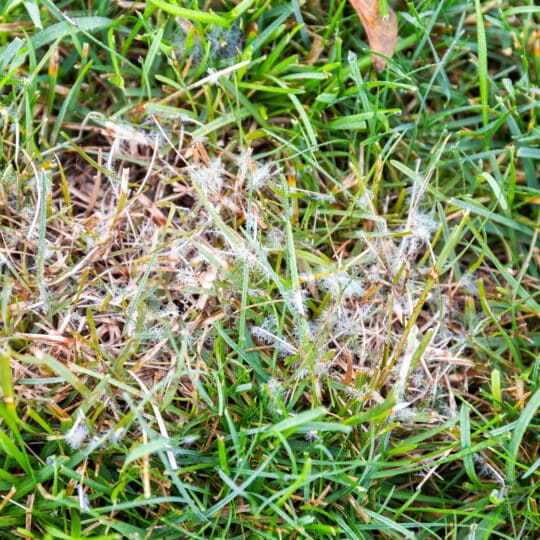4 Common Summer Lawn Diseases
How to Identify, Treat, and Prevent Each One

Summer’s warm, humid days are ideal for sunning by the pool, relaxing in the air conditioning, and fungal growth in lawns. Learn how to identify, treat, and prevent summer lawn disease so you can focus more on enjoying the season.
Common Summer Lawn Diseases
Warm temperatures, high humidity, and moist conditions create the perfect environment for mold and fungi growth. You may notice more mushrooms popping up in your lawn or discolored patches dotting your grass. If you do, you could be dealing with some of the most common summer lawn diseases. Here’s what to watch for:
- Brown Patch: Circular discoloration with a darker outer ring
- Dollar Spot: Silver dollar-sized patches of straw-like grass
- Powdery Mildew: White or grayish grass blades found in shaded areas
- Pythium Blight: Dark, greasy looking spots that form in areas with poorly drained soil
If you notice any of these signs, it’s best to act fast before it spreads to healthy turf.
Treating Lawn Disease
While you can’t control the outdoor temperature or humidity, you can help control fungal disease and stop it from spreading throughout your lawn. There are specialized fungicides formulated to treat certain lawn diseases. This is why proper identification is important. Make sure to choose the product labeled for the disease you’re trying to treat. For best results, contact the specialists at Green Image Lawn Care to assess the problem and devise a treatment plan.
Disease Prevention Options
While most of fungal problems occur because of the ideal weather conditions, some are exacerbated by poor lawn care. From fertilizing to improving soil drainage, there are maintenance tasks that help prevent disease no matter the weather. Here are some options:
- If you’re watering your lawn and plants, do so deeply, infrequently, and in the morning to allow moisture to dry out during the day.
- Use a balance fertilizer to maintain the proper pH levels and limit the amount of nitrogen in the soil.
- Aerate the lawn to help reduce thatch and soil compaction and improve air circulation and drainage.
- Mow the lawn at the recommended height for your type of grass and only when needed.
- Don’t let diseased grass clippings lay in your lawn. Dispose immediately to prevent spreading.
- Trim trees and shrubs to prevent them from overhanging in the lawn, especially in areas where powdery mildew is found.
- Regularly inspect your lawn for early signs of disease, pests, and stress.
By properly maintaining your lawn, identifying any problem areas, and working fast to treat it, you can help keep your yard looking healthy throughout the summer. Green Image Lawn Care is here to help you handle any issues that arise. Call 717-900-8144 today to set up a consultation so you can get back to more relaxing seasonal activities.